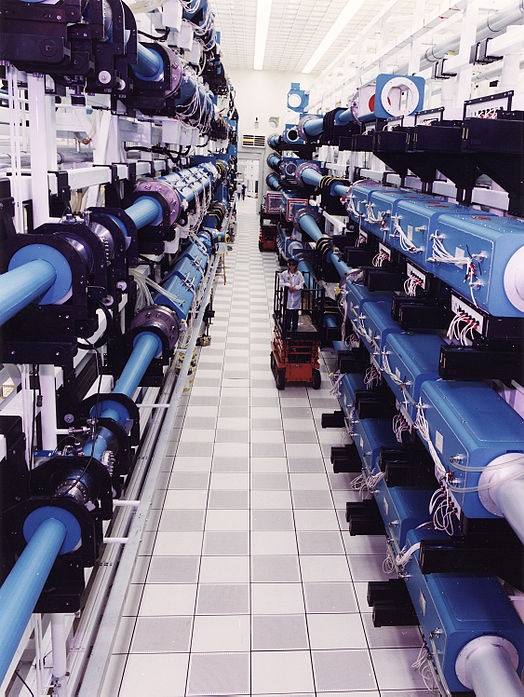Nuclear Fusion 7 - History 5
In 1979, the U.S. Los Alamos National Laboratory demonstrated the radio frequency quadrupole accelerator (RFQ). The RFQ is a linear accelerator with low beam energies between fifty thousand electron volts and three million electron volts which accelerates and focuses a stream of charged particles. The U.S. Argonne National Laboratory and Hughes Research Laboratories demonstrate an ion source utilizing a xenon beam at one and one half million electron volts. A report to the U.S. DOE concluded that Heavy Ion Fusion (HIF) was the best path to commercial fusion power reactors. The Director of the DOE Department decides to invest more effort and resources in HIF.
In 1982, German and U.S. researchers work on a Conceptual Heavy Ion Beam Driven Fusion Reactor (HIBALL) design. The design includes four chambers served by a single radio frequency accelerator and liquid lithium inside the walls of the chambers. The French begin construction of a tokamak design they call "Tore Supra." The name is derived from torus and superconducting. Their design is the first tokamak that utilizes superconducting magnets to generate a powerful permanent poloidal field.
In 1983, the Joint European Torus is completed in the U.K. after almost ten years of work and first plasma tests are conducted. At the Lawrence Livermore National Laboratory, the NOVETTE laser begin operating. It is used to test design concepts for the next generation of Inertial Confinement Fusion lasers. NOVETTE is a two beam neodymium laser that was constructed from parts of the Shiva and Argus lasers.
In 1984, Lawrence Livermore National Laboratory finishes construction of the big ten beam NOVA laser utilizing information from the NOVETTE laser. NOVA was the first inertial confinement fusion experiment which was intended to reach "ignition." Ignition is a nuclear fusion chain reaction that releases a large amount of energy. NOVA failed to reach ignition but its failure highlighted the problem of magnetohydrodynamic instability in the plasma. NOVA laid the groundwork for future fusion reactor designs.
In 1985, the U.S. National Academy of Sciences surveyed all the U.S. military research programs for inertial confinement fusion. The survey mentioned that Heavy Ion Fusion (HIF) did have a lot of advantages. There was concern that the military program were heavily reliant on civilian research programs. The survey conclusion was that the primary purpose of HIF research should be for commercial power generation. In the same year, Japan completed their Japan Torus-60 (JT-60) tokamak and conducted plasma experiments. This reactor is still in use today and has produced important findings for fusion research.
In 1988, the Soviets completed their T-15 tokamak which included helium cooled superconducting coils for generating the magnetic fields. The Conceptual Design Activity for the International Thermonuclear Experimental Reactor (ITER) project began in 1988. It would follow and build on the knowledge gained by the T-15, TFTR, JET and JT-60 tokamaks. Euratom, Japan, the U.S.S.R. and the U.S. were all participants in the project which concluded in 1990.
Laser bay of the NOVA laser at Lawrence Livermore National Laboratory:
